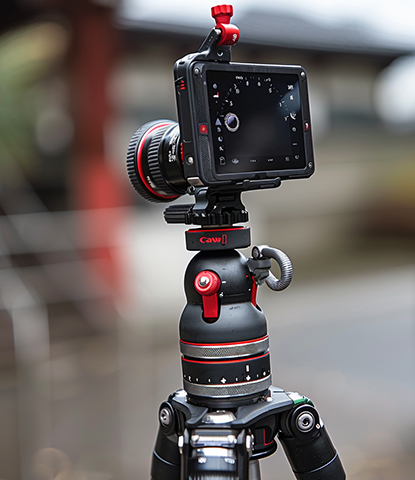

Time:2025-10-10 Views:1

Camera grips are constantly exposed to various environmental factors, and oxidation can severely affect their appearance and functionality over time. Anti - oxidation measures for camera grips are crucial to ensure their longevity and maintain optimal performance.
The primary cause of oxidation in camera grips is the reaction of the materials with oxygen in the air, especially when combined with moisture and other contaminants. Metals, such as aluminum or magnesium alloy, which are commonly used in high - end camera grips for their strength and lightweight properties, are prone to oxidation. When oxidized, these metals can form a layer of metal oxide on the surface, which not only changes the aesthetic appearance, often turning the surface dull or discolored, but can also lead to corrosion if left untreated, weakening the structural integrity of the grip.
To combat oxidation, manufacturers employ several techniques. One common approach is surface coating. Anodizing is a popular method for aluminum - based camera grips. In this process, the aluminum grip is placed in an electrolyte solution and an electric current is passed through it, creating a thick, protective oxide layer on the surface. This anodized layer is much more durable and resistant to oxidation compared to the naturally occurring oxide layer. Additionally, it can be dyed in various colors, enhancing both the aesthetic appeal and the anti - oxidation performance.
Another effective anti - oxidation solution is the application of protective polymers or lacquers. These coatings form a barrier between the material of the camera grip and the external environment, preventing oxygen and moisture from coming into direct contact with the surface. Some high - quality camera grips use specialized anti - oxidation polymers that are not only highly resistant to oxidation but also offer additional benefits such as scratch resistance. These polymers can be applied through processes like spraying or dipping, ensuring a uniform and long - lasting protective layer.
In addition to surface treatments, material selection also plays a vital role in anti - oxidation. Some camera manufacturers are now using corrosion - resistant alloys or composite materials that inherently have better resistance to oxidation. For example, certain stainless - steel alloys can be used in parts of the camera grip, as they are less likely to oxidize compared to other metals. Composite materials, which combine different substances to leverage their best properties, can also be engineered to have excellent anti - oxidation characteristics while maintaining the necessary strength and weight requirements for a camera grip. Regular maintenance, such as cleaning the camera grip with non - abrasive materials and storing it in a dry environment, also helps to slow down the oxidation process and keep the grip in good condition for an extended period.
Read recommendations:
spotting scope quick release plate
underwater photography without strobe equipment